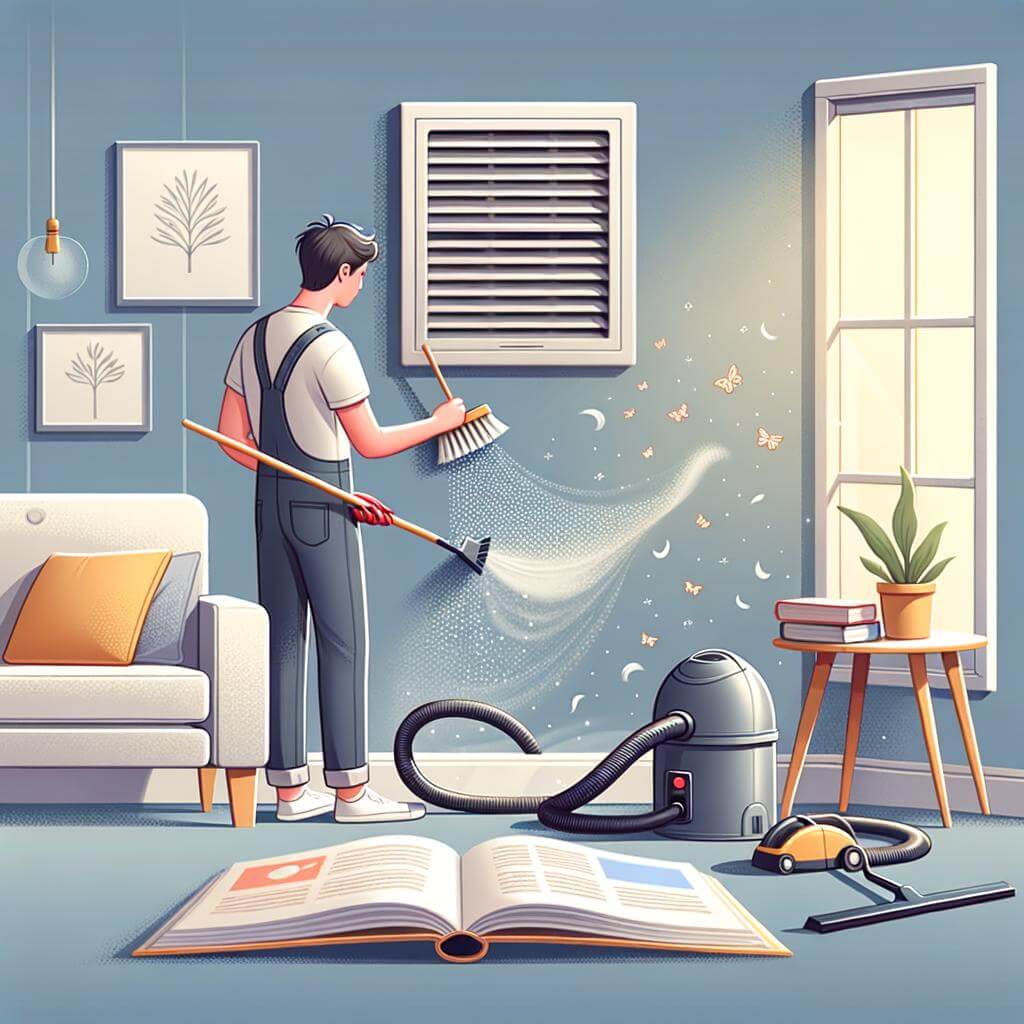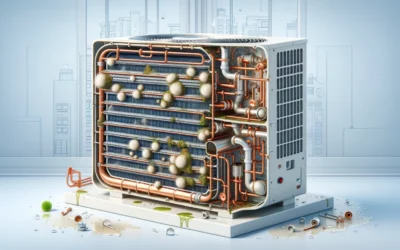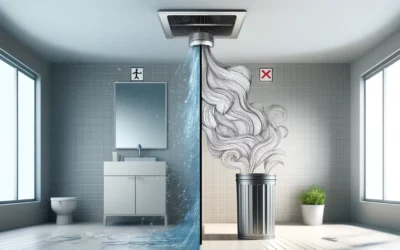Welcome to our informative post! Today, we’ll unveil the reasons behind dusty air vents in your home. This is an issue far too many homeowners encounter but often fail to understand why. This educational post offers expert opinions based on hard facts to help you figure out the root causes of the accumulation of stubborn dust layers in your vents. We’re not merely identifying potential problems; we’re providing useful insights into evaluating if they’re applicable to your case. By gaining this understanding, you’ll be well-equipped to tackle the issue effectively, improve the air quality in your home, and possibly reduce your energy bills. So, let’s dive in and uncover the mysteries of dusty air vents and the practical solutions for a cleaner, healthier home.
Understanding the Problem: What Causes Dusty Air Vents in Your Home
If you’ve ever noticed a significant amount of dust settling on your air vents, it might leave you baffled. To understand this common household issue, you must first understand that dust is an inevitable part of our environment. Dust in your home is a mishmash of several things, including dead skin cells, clothing fibers, bacteria, pollen, soil particles, and more. This concoction naturally floats in the air and can easily accumulate in places like your air ducts and vents.
One prominent reason for dusty air vents is inadequate air filtration. If your air filter isn’t doing its job correctly, more dust and particulates can get through and collect in your vents. Another factor is humidity. In high humidity conditions, dust particles become sticky and are more likely to bond together and adhere to surfaces such as air vents. Additionally, if your home is generally dusty, due to factors like living in a high-pollution area or not cleaning often enough, you’re naturally going to find more dust buildup in your vents. Other factors like poor ventilation and excessive use of HVAC systems can also contribute to your dusty problem. Let’s break this down in more detail:
| Cause | Explanation |
|---|---|
| Inadequate Air Filtration | A faulty or low-quality air filter allows more dust to pass through and accumulate in your vents. |
| High Humidity | Dust particles are more likely to stick together and adhere to surfaces in humid conditions. |
| High Dust Levels | Living in a high-pollution area or not cleaning your home regularly can lead to increased dust levels. |
| Poor Ventilation | Inadequate air flow can cause dust to settle in your vents instead of being circulated out of your home. |
| Excessive HVAC Use | When HVAC systems are in constant use, they pull in outside air, which can carry dust. |
In conclusion, dusty air vents are typically caused by multiple factors, many of which are easily manageable. Making simple changes such as improving your home’s ventilation and investing in high-quality air filters can help keep your vents dust-free.

Diving Deeper into the Impact of Dusty Air Vents on Indoor Air Quality
As you spend a significant amount of time indoors, the quality of your indoor air hugely impacts your health. Many factors can lead to the degradation of indoor air quality, but one of the most underrated is dusty air vents. If not checked and cleaned regularly, these air vents can turn into a breeding ground for harmful bacteria, mold, and dust mites, worsening your indoor air quality considerably.
Dusty air vents are often the result of lack of regular maintenance. Elements that accumulate in your air vents can originate from various sources:
- Pet hair and dander
- Household dust
- Pollen from outdoors
- Mold spores
- Construction debris
When your heating, ventilation, or air conditioning (HVAC) system operates, its fan thrusts these particles into your home. The result can be a myriad of respiratory issues, allergies, and other health concerns.
| Air Vent IssueResultant Health Condition | |
|---|---|
| Dust buildup | Respiratory issues |
| Mold spores | Allergies |
| Pollen | Asthma |
| Construction debris | Non-specific symptoms like dizziness, headaches, fatigue |
Understanding the impact of dusty air vents on indoor air quality is the first step towards a healthier home. Regular cleaning, installation of air purifiers, frequent maintenance of your HVAC system, and efficient dust control can go a long way in improving your indoor air quality.

Observations by Experts: The Possible Health Risks Associated with Dusty Air Vents
Consulting the experts has shed more light on the health risks associated with dusty air vents. Among the ways dust can be harmful to the human body, the presence of microscopic organisms known as dust mites arises as a huge concern. These creatures can thrive in these environments and their waste material and body fragments can become airborne, triggering allergies and asthma.
Additionally, damp and dusty air vents can create a conducive environment for mold and bacteria, which can produce spores that are subsequently dispersed into the air. Those with weak immune systems, allergies, or respiratory conditions are particularly susceptible to such biological contaminants. Hence, these factors combine to present a compelling case for regular cleaning and maintenance of your ventilation systems.
- Dust Mites – can trigger allergies and asthma
- Mold and Bacteria – production of airborne spores can cause respiratory problems
Let’s look at a breakdown of these issues:
| Issue | Effects | Solution |
|---|---|---|
| Dust Mites | Trigger allergies and asthma | Regular vent cleaning |
| Mold and Bacteria | Cause respiratory problems | Regular vent cleaning and controlling humidity levels |
Keep in mind, these are just a few among many possible health risks that may lurk in your dusty air vents. It’s always best to err on the side of caution and ensure that you’re not just cleaning for appearance’s sake, but indeed for the health and safety of your household’s occupants.

Home Assessment: Identifying Key Areas Contributing to Dust Accumulation in Vents
Unbeknownst to many, the quality of our indoor air heavily hinges on the cleanliness of our air vents. The dust accumulation in our ventilation system is not merely a result of neglecting regular cleaning; various underlying conditions contribute to it. First off, we have to scrutinize the areas in our home that are hotspots for dust collection.
In many cases, the lack of proper insulation is the chief culprit. Drafty windows and doors, unsealed floorboards, and inadequately insulated attics provide an easy passage for exterior pollutants, including dirt and dust, to enter our living spaces. Furthermore, humidity levels in our homes also play a pivotal role in dust accumulation. High humidity encourages the growth of dust mites, while a too-dry environment facilitates the spread of dust particles.
-
Area Dust Accumulation Reason Unsealed floorboards Allow dust and dirt from exterior to seep in Drafty doors & windows Easy passage for air-borne dust particles Inadequately insulated attics Creates influx of outdoor contaminants High Humidity Residential Space Promotes dust mite proliferation
On top of these, inadequate ventilation and inefficient air filters compound dust-related issues. Poorly ventilated homes trap stale air full of dust and allergens, while old or inefficient air filters fail to keep out dust particles floating in the air we breathe. Regular cleaning combined with solving these underlying conditions will have a significant impact on reducing dust accumulation in our ventilation system.

Granting Remedies: Practical Steps to Clean Your Air Vents
Now that you are aware of the causes behind dusty air vents, it’s time to take action! Dirty air vents not just downgrade the quality of your indoor air but also impact the efficiency of your heating and cooling system. Let’s turn the tables now with some practical steps to clean your air vents. Know The Tools Required: First and foremost, understand the cleaning tools that you will need to get your air vents sparkling clean. For this, you will need a screwdriver, a cleaning brush, a vacuum, and a cloth or paper towels. Remember to put on a mask and gloves to protect yourself from inhaling dust or allergens.
| # | Tool | Usage |
|---|---|---|
| 1 | Screwdriver | To unscrew air vents |
| 2 | Cleaning Brush | To scrub off the dust |
| 3 | Vacuum | To suck up loose dust particles |
| 4 | Cloth/Paper Towels | To wipe and dry the vents |
Dealing with The Dust: Start by turning off your heating or cooling system to avoid dust from circulating. Then, using a screwdriver, carefully remove the air vent covers. Use a vacuum to suck up loose dust particles from the surface and inside the ducts. Use a rigid cleaning brush to scrub off remaining dust or mold. If the dirt is stubborn, soak the vent cover in a cleaning solution before scrubbing. Lastly, wipe the vent cover dry before placing it back. Note: If you notice an excessive buildup of dust or a presence of pests, consider calling a professional for deep cleaning. Regular cleaning of your air vents can help in maintaining a healthy indoor environment and in preventing respiratory issues caused due to poor air quality. Remember, a clean home is a healthy home!
Ongoing Maintenance: How to Keep Your Air Vents Dust-Free for a Healthier Home
When it comes to creating a healthier home, the state of your air vents plays a crucial role. They can easily become a collection point for dust and other allergens that impact the air quality within your home. While routine cleaning is one way of addressing this, understanding the root causes of dust accumulation in your vents can be a significant first step in keeping your home free from allergens.
The Anatomy of Dust Proliferation
Believe it or not, the manner in which dust accumulates in your vents is more than mere negligence. One of the significant reasons is the environmental factor. Factors like humidity, pet dander, and even the weather can increase dust levels. Inadequate ventilation also plays a part in this, with poorly designed or blocked vents not providing an outlet for accumulated dust particles. Finally, insufficient filtering can result in more dust being circulated, especially if filters are not regularly replaced.
- Environmental Factors – High humidity levels can cause more dust to stick within vents, while weather changes can create more dust particles.
- Ventilation – Poorly designed or blocked vents can trap dust and reduce the overall airflow within your home.
- Insufficient Filtering - Air filters that are not replaced regularly can become over-saturated with dust, reducing their efficiency and increasing dust levels.
These are just a few key reasons - there may be others specific to your individual circumstances. You may find it useful to consult with a professional who can assess your home’s specific challenges and provide a comprehensive maintenance plan.
| Solution | Description |
|---|---|
| Professional Air Duct Cleaning | This service may involve a deep clean of the entire ductwork system to eliminate accumulated dust. |
| Regular Filter Replacement | Ensuring filters are changed out regularly – typically every 90 days - can help maintain indoor air quality. |
| HVAC System Check | A professional may identify any malfunctioning parts or areas in need of maintenance. |
Key Takeaways
In conclusion, dusty air vents are a common problem that every homeowner encounters. While it might appear as a minor issue, it can significantly impact the quality of indoor air and, in turn, our health. Giving consistent attention to the reasons behind their accumulation can make a huge difference. Regular maintenance, properly sealing air ducts, and investing in air purifying devices can be effective solutions in reducing dust buildup. At the end of the day, remember that a clean and well-maintained HVAC system serves not just as a key for a more comfortable living environment but also a healthier home. Taking these simple steps lets you breathe easier, literally and figuratively. Stay informed and continue your quest in making your home a cleaner and healthier place. This is your trusted expert, hoping you’ve found this piece educational and helpful—until our next insightful discussion.




